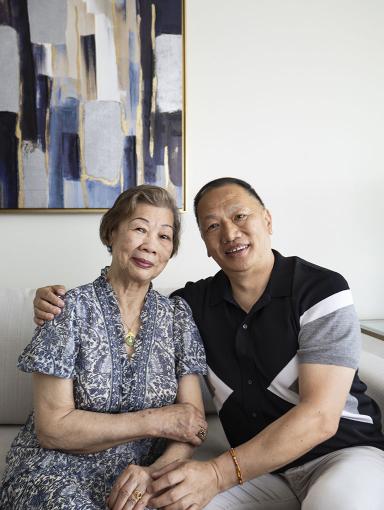New atlas of genetic influences on osteoporosis Promises Improved Treatments
Identifying more than 500 genetic determinants of bone mineral density, researchers expect to provide new opportunities for the development of novel drugs to prevent or treat osteoporosis
BOSTON – A ground-breaking new study has succeeded in compiling an atlas of genetic factors associated with estimated bone mineral density (BMD), one of the most clinically relevant factors in diagnosing osteoporosis. The paper, published in Nature Genetics, identifies 518 genome-wide loci, of which 301 are newly discovered, that explain 20% of the genetic variance associated with estimated BMD. Identifying so many genetic factors offers great promise for the development of novel targeted therapeutics to treat osteoporosis and reduce the risk of fracture.
“Our findings represent the largest genetic study of genetic associations with the density of bone. This large study provides potential future targets for drug development to treat osteoporosis,” explains Douglas Kiel, M.D., M.P.H., one of the authors on the study and Director of the Geriomics Program at the Hinda and Arthur Marcus Institute for Aging Research at Hebrew SeniorLife and Professor of Medicine at Harvard Medical School. Although there are available treatments for the osteoporosis patients who Dr. Kiel treats, many of the drugs have side effects that deter patients from receiving treatment. According to Dr. Kiel, “Our patients need additional therapies to treat their osteoporosis, and genetic studies like ours can identify new biologic pathways related to bone that can be leveraged to develop new drugs capable of preventing fractures.”
Osteoporosis is a very common age-related condition characterized by the progressive reduction of bone strength, which increases the risk of sustaining a fracture. Especially among older patients, fractures can have severe consequences, such as disability with loss of personal independence, and in some cases death. Among all sufferers, fractures impose major burdens of hospitalization, extended rehabilitation, mobility limitations and even destitution. As the population ages, the urgency of improving preventive measures becomes all the more intense.
This was the largest study ever undertaken of the genetic determinants of osteoporosis, assessing more than 426,000 individuals who were part of a large study called the UK Biobank. After analyzing the data, the researchers further refined their findings to isolate a set of genes that are very strongly enriched for known drug targets. This smaller set of target genes can form the basis for the development of treatments to increase bone density to prevent fractures. Also the findings in humans were tested in a unique set of mice who had these genes altered to see if they had weak skeletons.
“Although it might seem overwhelming to sort through the many genes we found to be associated with bone density, we are able to focus on those with the greatest effect to potentially target for drug development. Another value of our study is that it can be used to estimate a person’s risk for having weaker bones, thereby alerting them to the need for adapting healthy lifestyle choices such as physical activity and diet, and to make sure they get screened with bone density testing,” said Dr. Kiel
About the Hinda and Arthur Marcus Institute for Aging Research
Scientists at the Marcus Institute seek to transform the human experience of aging by conducting research that will ensure a life of health, dignity and productivity into advanced age. The Institute carries out rigorous studies that discover the mechanisms of age-related disease and disability; lead to the prevention, treatment and cure of disease; advance the standard of care for older people; and inform public decision-making.
About Hebrew SeniorLife
Hebrew SeniorLife, an affiliate of Harvard Medical School, is a national senior services leader uniquely dedicated to rethinking, researching and redefining the possibilities of aging. Based in Boston, the non-profit, non-sectarian organization has provided communities and health care for seniors, research into aging, and education for geriatric care providers since 1903. For more information about Hebrew SeniorLife, visit https://www.hebrewseniorlife.org, follow us on Twitter @H_SeniorLife, like us on Facebook or read our blog.
